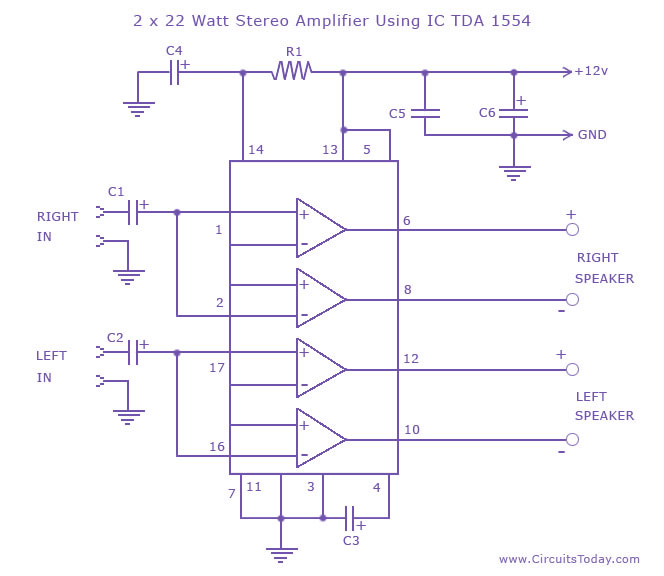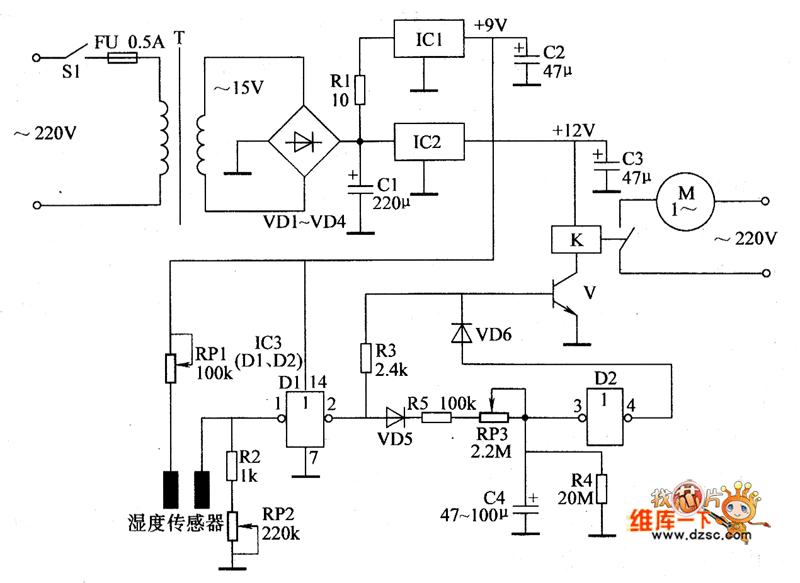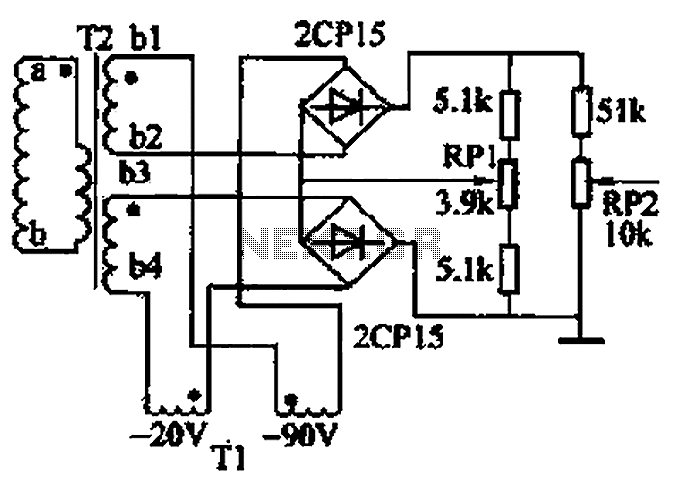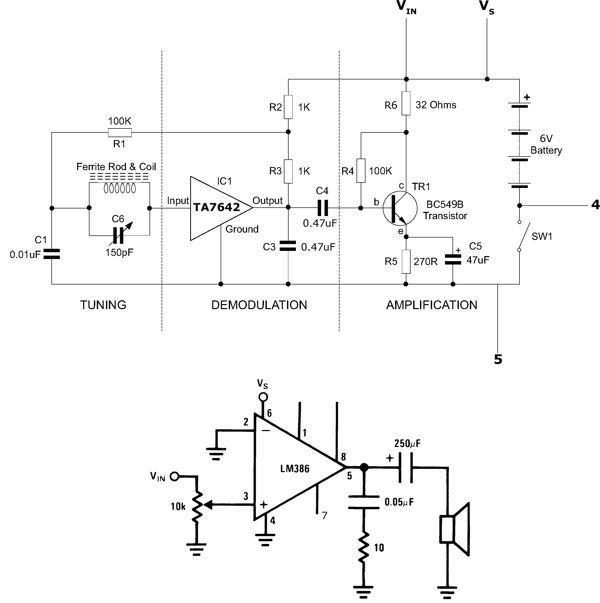
1Hz clock signal generator circuit

A 1Hz clock signal generator circuit is presented, which demonstrates a sophisticated clock signal generating mechanism. This circuit can be utilized for digital clocks and timing applications. It comprises a binary counter (CD4060), a JK flip-flop (CD4027), and a 32.768 kHz quartz crystal. The IC1 component connects to an external crystal, functioning as the oscillator circuit. The oscillation frequency is set to 32.768 kHz, with a tuning capacitor that allows precise adjustments to this frequency. The oscillation signal from IC1 undergoes a division by 21, resulting in a 2 Hz square wave output. This signal is subsequently processed through IC2, which further divides the frequency by 2, ultimately producing an accurate 1 Hz clock signal at the output pin of IC2.
The 1Hz clock signal generator circuit operates by leveraging the properties of a binary counter and a JK flip-flop. The CD4060 binary counter is primarily responsible for frequency division. It begins with the input frequency from the 32.768 kHz quartz crystal, which is a standard frequency used in timekeeping devices due to its accuracy and stability. The counter divides this frequency down through a series of flip-flops, achieving the necessary output frequency.
The JK flip-flop (CD4027) serves as an additional stage to further refine the output signal. It is configured to toggle its output state with each clock pulse received, effectively halving the frequency of the signal from the binary counter. The use of a tuning capacitor allows for fine adjustments to the oscillator frequency, ensuring the output remains stable and accurate, which is crucial for applications requiring precise timing.
The final output of the circuit, which is a 1 Hz square wave, is suitable for driving digital clock displays or other timing circuits. This output can be interfaced with additional circuitry for display purposes or other timing-related functions. The design emphasizes reliability and precision, making it an ideal choice for both hobbyist projects and more advanced electronic applications. The integration of the CD4060 and CD4027 components in this configuration provides a robust solution for generating a stable clock signal necessary for various electronic devices.1Hz clock signal generator circuit It shows a sophisticated l llz clock signal generating circuit. Can be used for digital clock and timing circuits: The circuit consists of 14 binary counter CD4060, JK flip-flop CD4027 and 32.768 kHZ quartz crystal device components. IC1 ?, pin external crystal body and the circuit chip oscillator circuit, the oscillation frequency of 32.768 kHz, tuning capacitor Q can be precisely adjusted to this frequency. The oscillation signal by ICI by 21. After the second division, the output of IC1 2 Hz square foot is a signal, the signal through the IC2 party boat after 1,2 division, will come out in IC2 cuckoo O pin output frequency is accurate clock 1} Mu signal.
-
The 1Hz clock signal generator circuit operates by leveraging the properties of a binary counter and a JK flip-flop. The CD4060 binary counter is primarily responsible for frequency division. It begins with the input frequency from the 32.768 kHz quartz crystal, which is a standard frequency used in timekeeping devices due to its accuracy and stability. The counter divides this frequency down through a series of flip-flops, achieving the necessary output frequency.
The JK flip-flop (CD4027) serves as an additional stage to further refine the output signal. It is configured to toggle its output state with each clock pulse received, effectively halving the frequency of the signal from the binary counter. The use of a tuning capacitor allows for fine adjustments to the oscillator frequency, ensuring the output remains stable and accurate, which is crucial for applications requiring precise timing.
The final output of the circuit, which is a 1 Hz square wave, is suitable for driving digital clock displays or other timing circuits. This output can be interfaced with additional circuitry for display purposes or other timing-related functions. The design emphasizes reliability and precision, making it an ideal choice for both hobbyist projects and more advanced electronic applications. The integration of the CD4060 and CD4027 components in this configuration provides a robust solution for generating a stable clock signal necessary for various electronic devices.1Hz clock signal generator circuit It shows a sophisticated l llz clock signal generating circuit. Can be used for digital clock and timing circuits: The circuit consists of 14 binary counter CD4060, JK flip-flop CD4027 and 32.768 kHZ quartz crystal device components. IC1 ?, pin external crystal body and the circuit chip oscillator circuit, the oscillation frequency of 32.768 kHz, tuning capacitor Q can be precisely adjusted to this frequency. The oscillation signal by ICI by 21. After the second division, the output of IC1 2 Hz square foot is a signal, the signal through the IC2 party boat after 1,2 division, will come out in IC2 cuckoo O pin output frequency is accurate clock 1} Mu signal.
-





